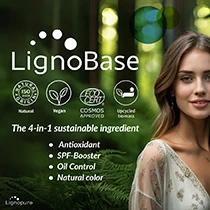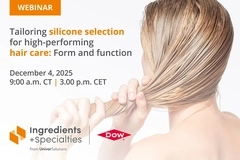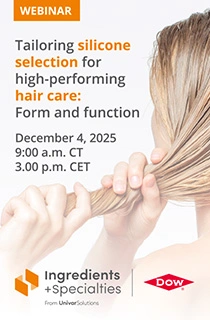US non-profit NSF urges FDA adoption of existing standard for new GMPs under MoCRA
28 Jul 2023 --- NSF, the US health and safety organization, is supporting the FDA in adopting NSF/ANSI 455-3, the American National Standard for Cosmetics Good Manufacturing Practice (GMP), instead of developing a fully novel federal standard. NSF believes adopting the pre-existing standard will be more cost-effective and timely, enabling the FDA to take “advantage of the private sector expertise and align regulatory oversight with industry best practices.”
This comes after the federal agency hosted a listening session in June as the first step to establishing a GMP for manufacturers, a key part of the Modernization of Cosmetics Regulation Act (MoCRA) signed into law last year.
“Under MoCRA, FDA must propose a GMP for cosmetics rule by December 2024,” shares NSF.
Speaking to Personal Care Insights, Brandi Reinbold, senior manager of global certification at NSF, says that as the cosmetic market becomes increasingly global, supply chains become longer and more complex, so MoCRA will modernize the oversight of the cosmetics industry.
“Regardless of whether the FDA selects to reference NSF/ANSI 455-3 within the GMP regulations or to use it to encompass the entirety of the GMPs, NSF will continue to provide expert analysis and opinion of the draft regulations they become available for comment in service of our mission to protect human and planet health,” Katherine Fillinger, senior manager of global certification, also tells us.
Developed in 2018, NSF/ANSI 455-3 seeks to address global and domestic compliance for cosmetic products.
Tighter control and potential pitfalls
Reinbold says: “As product contamination by microbes and with adulterants like PFAS and asbestos make the news, the industry needs to exert more control over processes and meet baseline standards for quality.”
 NSF shares that under MoCRA, FDA Must Propose a GMP for Cosmetics Rule by December 2024.“Other industries have experienced this same need in the last few decades, like DSHEA [Dietary Supplement Health and Education Act] for dietary supplements and FSMA [Food Safety Modernization Act] for food.”
NSF shares that under MoCRA, FDA Must Propose a GMP for Cosmetics Rule by December 2024.“Other industries have experienced this same need in the last few decades, like DSHEA [Dietary Supplement Health and Education Act] for dietary supplements and FSMA [Food Safety Modernization Act] for food.”
Reinbold explains that such regulations can ensure that no matter where the product ingredients are sourced from, US consumers will have access to products of consistent quality. “This benefits the industry by increasing consumer trust in its products and reducing liability incurred by poor product quality.”
However, Fillinger flags a “potential pitfall during the writing and implementation of these regulations could include overly specific requirements that fail to provide the necessary flexibility warranted for an industry with a vast array of product types and risk profiles.”
“The FDA can manage this by writing the regulation as a high-level system overview and supplementing it with non-mandatory guidance. NSF/ANSI 455-3 is also written this way. It consists of the standard with the requirement and an accompanying guidance document that includes detailed descriptions of the typical compliance profile that is non-mandatory.”
Impacts of an absence of GMP
Reinbold underscores that data is the most significant lack due to an absence of GMP. “The best information we have on the state of product quality in the industry comes from the voluntary recall data collected by the FDA.”
“Roughly 70% of cosmetic recalls are related to microbiological contamination and another 16% are related to adulterants that are likely introduced with a raw material. Strong, fully implemented GMPs could have prevented most, or all, of these product issues.”
Fillinger elaborates: “Voluntary recalls are initiated by the FDA when issues come to the agency’s attention through consumer reporting. Without any requirements to keep GMP records, report serious adverse events, or initiate mandatory recalls, it is impossible to know how many quality issues are missed.”
“Other quality issues such as mislabeling are highly unlikely ever to be detected without GMPs. If botanical ingredients are adulterated or absent, the consumer is not getting what they paid for. However, there is currently no way to detect that,” she warns.
However, MoCRA will ensure a way for the FDA to remove adulterated products in the marketplace.
Why NSF/ANSI 455-3?
Fillinger states that since NSF/ANSI 455-3 is the existing GMP standard with the “greatest utility to maximize benefits and minimize limitations,” its versatility and national control can meet current and future needs of consumers, manufacturers and regulators, domestically and globally. GMPs should ensure that products are unaltered, where ingredient identity is true and is within safe limits upon contamination, according to Fillinger.
GMPs should ensure that products are unaltered, where ingredient identity is true and is within safe limits upon contamination, according to Fillinger.
“The result is an American National Standards Institute (ANSI)-accredited standard that includes both ISO 22716: 2007, the international standard for cosmetics GMP, and the FDA Draft Guidance for Cosmetic GMP,” shares NSF.
It adds that under NSF/ANSI 455-3, accredited third-party certification can be leveraged so regulators can make risk-based decisions with limited resources.
“In summary, due to continuous management practices of NSF as a standard writing body, NSF/ANSI 455-3 is the only public standard that can still easily be modified to meet any rulemaking criteria before the compliance deadline,” states the non-profit organization.
Reinbold shares that implementing cosmetic GMP will ensure more safe and higher quality consumer products. “Benefits to industry include better risk mitigation and reduced potential liability from inadvertently introducing an adulterated product to the marketplace.”
“US GMPs will ensure US companies remain competitive and facilitate trade in a global market which largely requires proof of GMP. Companies that are the first to comply will find themselves at a competitive advantage compared to those who delay implementation,” he continues.
Key factors under GMPs
GMPs should ensure that products are unaltered, where ingredient identity is true and is within safe limits upon contamination, according to Fillinger. “This means creating requirements for specifications for ingredients, finished products, packaging, labeling and verification.” Reinbold underscores that data is the most significant lack due to an absence of GMP.
Reinbold underscores that data is the most significant lack due to an absence of GMP.
“Specifications should include the microbiological limits where a product is susceptible to contamination. Facility sanitation and water quality parameters for water used as an ingredient or on product contact surfaces are also critically important.”
She adds that NSF/ANSI 455-3 also contains provisions for such controls – from supplier qualification to product distribution.
“NSF has over a 75-year history of coordinating public Joint Committee meetings between the industry, regulators and other interest groups using the American National Standards Institute standards writing process,” shares Reinbold.
“NSF can facilitate events of any size should the FDA decide to utilize NSF/ANSI 455-3 as a reference. Meetings are virtual or onsite and are held yearly, at minimum. The next currently scheduled JC meeting is set for December of 2023.”
By Venya Patel, with additional reporting by Inga de Jong















